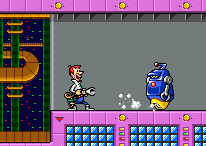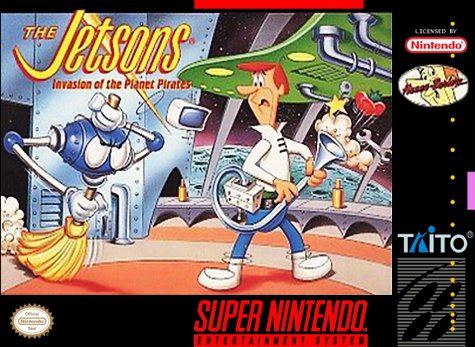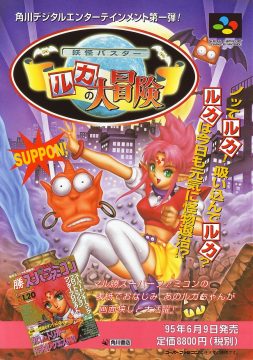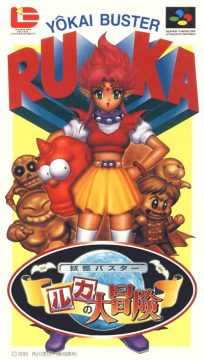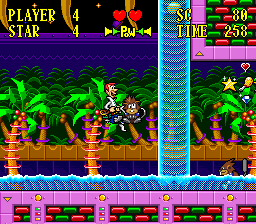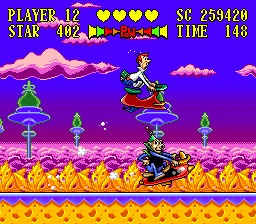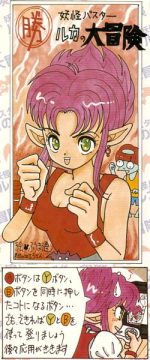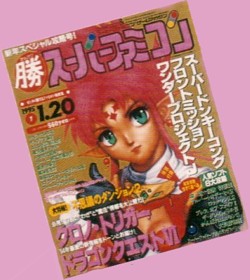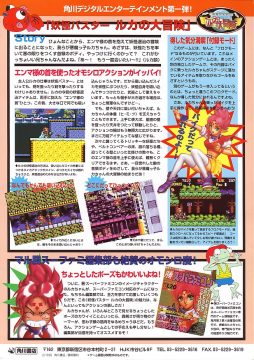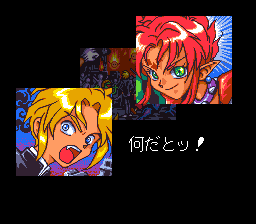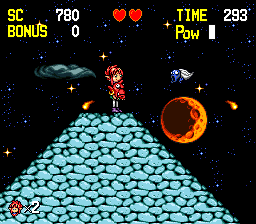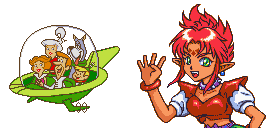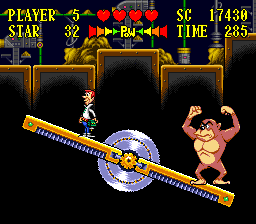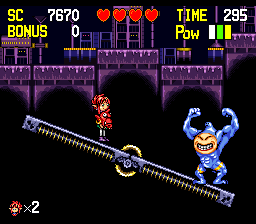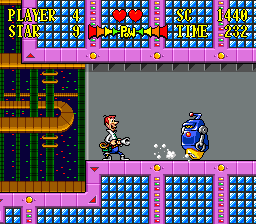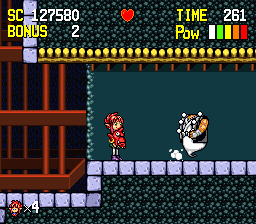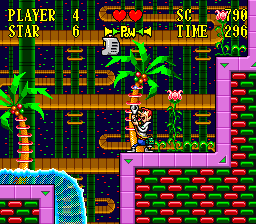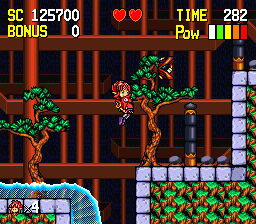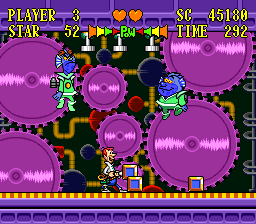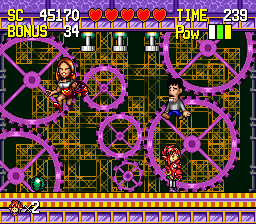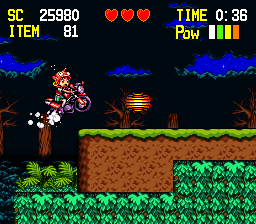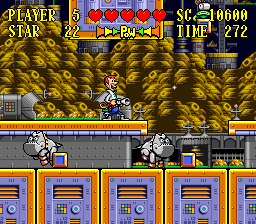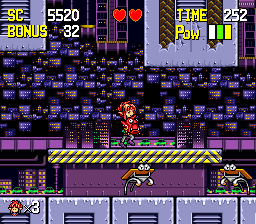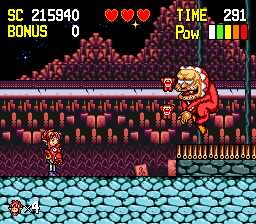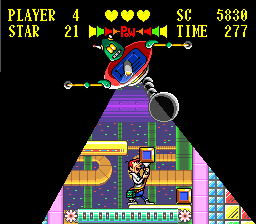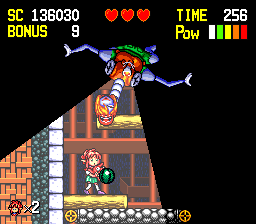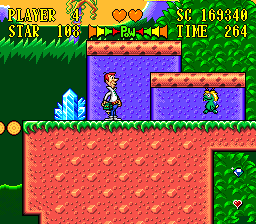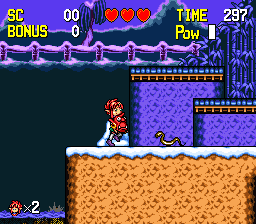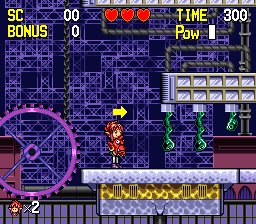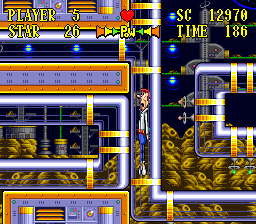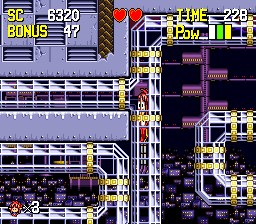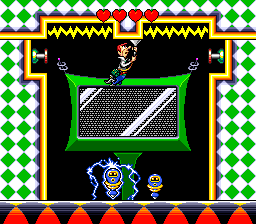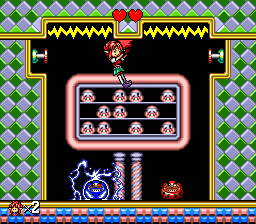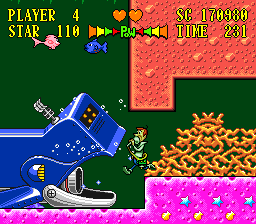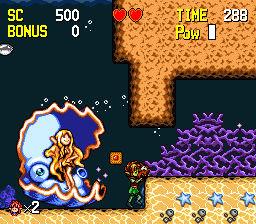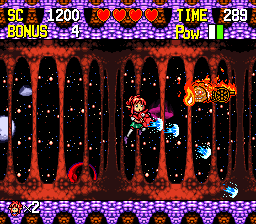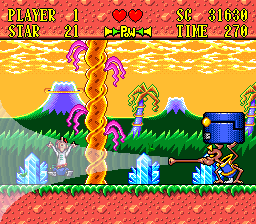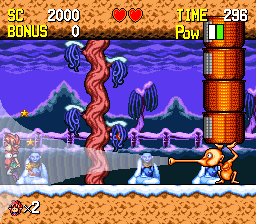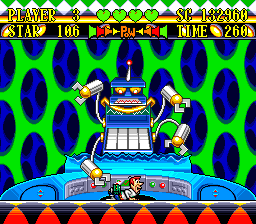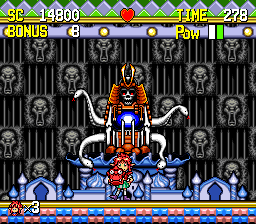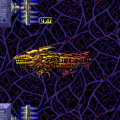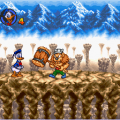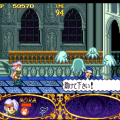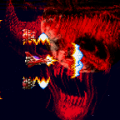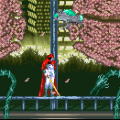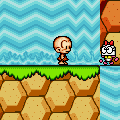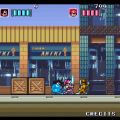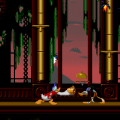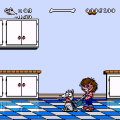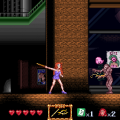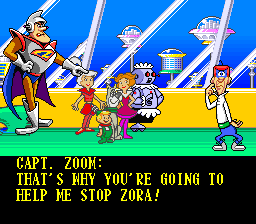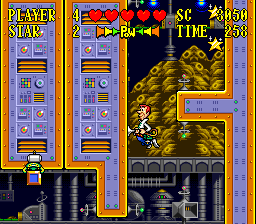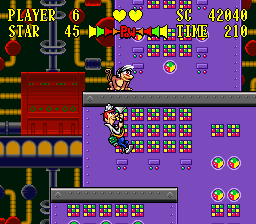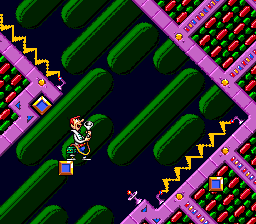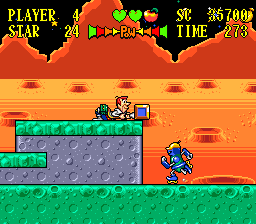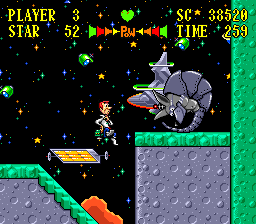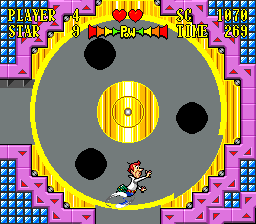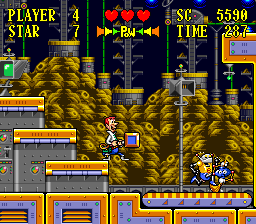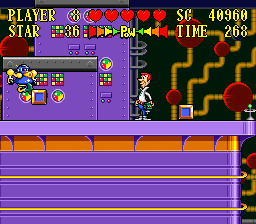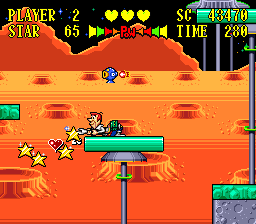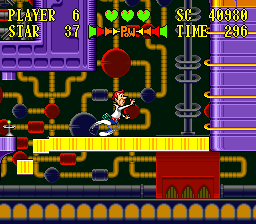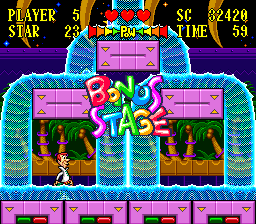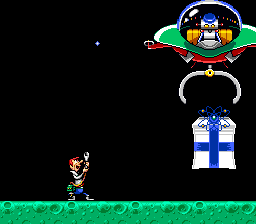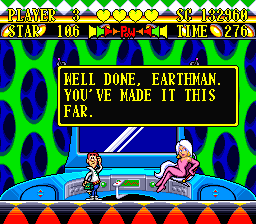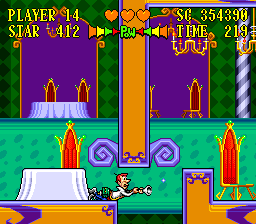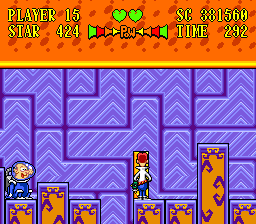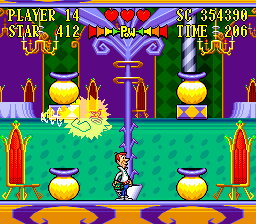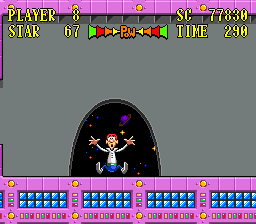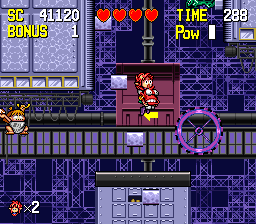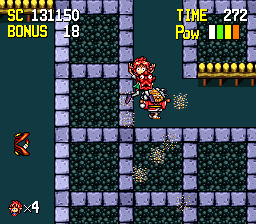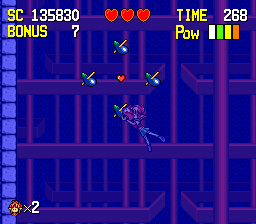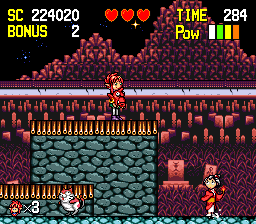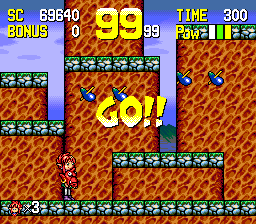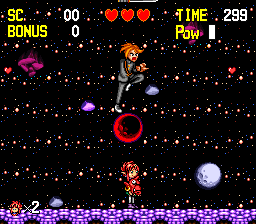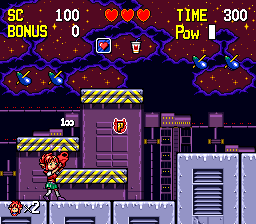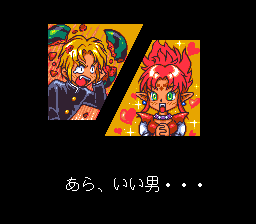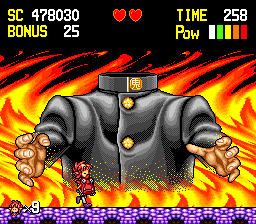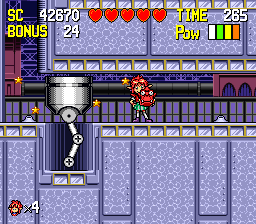The major problem many licensed property-based video games have is applicability. In many cases, it’s akin to forcing a square peg into a round hole as the license’s basis is far removed from any engaging interactive context. A movie can be action packed, but not in a similar way that works in a video game. The movie Jaws is suspenseful and ends with a literal bang, but most of it deals with character interaction, mostly in speech, or watching a slow buildup to a swimmer’s death. Ergo why the video game takes on it have you instead swimming and harpooning fish or playing as the shark yourself. The best and/or easiest properties to make the transition tend to have scenes or focus with shooting or battling, with many decent or some of the best in the genre for run-and-gun, shoot-em-up, or tournament fighters like Aliens, Teenage Mutant Ninja Turtles, Dragon Ball being just a few with noteworthy titles. Otherwise, it becomes an IP stuck into whatever manner of game of choice like having the citizens of Springfield skateboarding or wrestling or making a side scroller with whatever snack food or soft drink mascot available. While it doesn’t necessarily make these games bad (though there are many factors as to why the majority of them do), it can make them feel interchangable. A licensed BMX game would be the same whether the character riding on the bicycle doing tricks was Buzz Lightyear, one of The Berenstain Bears or the Slim Jim Guy. The following such titles exhibit the aforementioned quirk in a stunning portrayal of publishing pressure, licensing holders, and the split of Western and Eastern markets in the 90s.
It’s hard to fathom how one could take an animated sitcom from the 60s about family life in the push-button flying car and robotic age 100 years in the future and use those elements to make a platformer, but Natsume and license holder Taito did well with the property on the NES and Game Boy two years prior with Cogswell’s Caper! and Robot Panic, respectively. While both were stretching the usage of The Jetsons a little and used a block-tossing mechanic much like Capcom’s Chip ‘n Dale: Rescue Rangers duo of titles, they had plenty of ties to the cartoon and ultimately pitted the player against the show’s (more) evil business tycoon Mr. Cogswell. Robot Panic even had stages where other members of the family other than the main man George Jetson were the stars for their own thematic level that suited their character. Come the 16-bit era, development for the next Jetsons game was handed to Sting Entertainment, and most notable links to the animated show were tossed out the window for entirely new villains and locales.
Meet George Jetson, the father and breadwinner of the family. After rushing in from work complaining about his tyrant of a boss Mr. Spacely, he bumps into Captain Zoom who suddenly teleported in front of him. In the regular series, Captain Zoom was a rarely seen fictional superhero from his son Elroy’s comic books and TV show, but in the game he’s the real deal. His overall appearance here though is brief as he gives a rather lengthy slow-scrolling tale of dealing with a group of space pirates called the “SPREE” (Space Pirates Revelling in Evil Enterprises) led by the dastardly Zora. She and her minions travel the galaxy to loot and plunder all the natural resources of planets and leave them to perish (This was made during the time of the early 90s environmental awareness in children’s properties, so such Captain Planet villainy wasn’t too out of the norm). Unfortunately, Captain Zoom is too weak to stop them after their last confrontation, and they’re heading straight to Earth. Only George Jetson and his newly bestowed Pneumo Osmatic Precipitator, or P.O.P., can save the world.
The P.O.P. is the bread-and-butter of the whole experience. The game follows the school of design of taking a gimmick and running with it as Planet Pirates almost entirely revolves around this vacuum mechanic. The little belt-strap device and nozzle suck up enemies or blocks and hurls them away as your mean of offense. The P.O.P. can also drag George through tight passages since he’s unable to crawl, and allows him to scale walls and hang from ceilings. Many of the platforming, puzzle-solving, and secrets lie in proper use of the plunger nozzle. Another clever touch is the P.O.P.’s use as a scuba tank for George when he’s swimming underwater, which adds a little challenge of having to conserve suction lest lest he run out of breath. Other than that, there are a few moments where the player merely has to flip switches, ride pnematic tubes, or dash in George’s comical “Jane, stop this crazy thing” manner in order to proceed (careful not to run into walls though, or you’ll be stunned).
Invasion of the Planet Pirates is a colorful game that uses the 16-bit system to paint a vibrant cartoonish feel using the show’s retrofuture aesthetic. Various out-of-control robots and aliens litter the stages that range from space factories and warehouses and greenhouses to alien planets and moons. There are the stock platformer items to collect: stars for points, food, hearts, 1ups, and such. In addition, there are powerup stars to boost the strength of the P.O.P. and blocks to hurl at foes. It’s the vacuum gameplay that makes the game stand out as much of the stage layouts require suction climbing and manuvering. Sadly, much of the level design is bland with confusing placements. It can sometimes be hard to judge which path is the way to the exit and it can be tough to tell which leads to a pitfall. The difficulty becomes erratic as much of the enemies are a cinch to take care of yet there are places of instant death. Using the P.O.P. to swing across on ceilings is sticky and can easily cause a plummet to certain doom from one mistake. The flying dinner plates serve a severe annoyance in the final stage as they can’t be defeated unless hit by a block or another enemy and are small and hard to dodge from their sheer numbers. The bosses are naturally the most challenging aspect of the game. The problem lies in balancing with them being large and loaded with hit points while George can only take so much damage. Lose once and he’s left with 3 hearts and a weak P.O.P. and a long gauntlet of attacks to evade before he can land a hit on the big bad, making the battles a grueling hurdle – especially with the game’s late boss rush.
Like many titles, licensed or not, from the 80s and 90s, the Japanese developed SNES Jetsons game was released solely for the Western market, despite the cartoon is a known property in their home country and Cogswell’s Caper! arriving on their store shelves years earlier. Regardless, much of the same head designers were contracted by the publishing conglomerate Kadokawa Shoten for a tie-in game for a low-level manga creation. Marukatsu Famicomwas a gaming magazine printed by Kadokawa that, as the name suggests, focused entirely on games on the Nintendo system. Come late 1990 with the launch of the new 16-bit console, the mag rechristened itself as Marukatsu Super Famicom and would be a major contender in the Japanese video game press for years until a mass staff desertion in late 1994. Such a dynamic shift and loss of quality in the columns and content caused a major loss in readership and Kadokawa struggled to garner new sales.
Enter Ruka. It’s fairly common for Japanese magazines to contain running manga tales that usually pertain to the theme of the publication to keep readers coming back every month (think “Howard and Nester” from Nintendo Power, but generally less self-contained). Ruka-chan was a fiesty teenage-looking demon girl that was actually over 1000 years old. Her task was to rid the world of demons and monsters that were causing more trouble than she was. It’s a fairly standard plot that’s seen better in such Japanese series like Yu Yu Hakusho, Bleach, Soul Eater, etc. as Ruka’s fell more into stereotypical comical antics like swooning over boys and being rather lax in her work ethic. Goofy, but by-the-numbers. Kadokawa pushed her as a major face for the magazine and hoped a sponsored Super Famicom game would propel her as a mascot. Like many licensed games, the goal was a product now rather than a product later, so the title was rushed into production with Sting mere months to release it. With the information age in infancy, why not retool an existing game they made for other countries? Your potential customers would be none the wiser. Thus, Yōkai Buster: Ruka no Daibōken (“Phantom Buster: Ruka’s Geat Adventure”) is almost exactly Space Pirateswith a very Japanese coat of paint.
Ruka’s boss Enma, the Buddhist deity charged with judging the souls of the dead – an Asian St. Peter, as it were – is represented as a giant red oni in a business suit and jokingly referred to by Ruka as “Elvis”. One night his body was stolen by a handsome boy known only as, well, “Body” to be used for nefarious purposes along with his army of monsters. Left with only his head, Enma scolds and demands Ruka to get his body back or else he’ll gladly take hers as a replacement. In a very strange take on the mechanics, the head of Enma Ruka carries serves exactly like P.O.P. with the demonic noggin sucking in and spitting out enemies.
As stated earlier, all the graphics and enemies as well are changed to more contemporary Japanese settings and cameos from the manga while keeping the same stage layouts. For example, robot dogs are replaced with possessed school desks and the space transport base is changed to a Shinto temple. Many little additions help smooth the gameplay better than The Jetsons with markers and arrows pointing to exits and removing death via ratchet scrolling. One frustrating robo cat boss was alleviated with an exclusive water hose powerup to land much more strikes on a flaming ghost chariot. A tutorial stage was added to explain all the buttons and actions within the game for newcomers. The hover bike stage was removed from the main game and was made its own minigame and the final palace stage in The Jetsons was axed while an underwater segment was placed in one of the middle stages plus newer bonus games and an entirely unique final boss.
The score by Hideki Takahagi was removed and given a brand new soundtrack by Mitsuhito Tanaka, with some added vocal quips from Ruka. As a whole, Yōkai Buster is a better experience than Planet Pirates though many of the original’s flaws are still intact. As a very strange added trivia, both of these games were the last use of Mitsuhito Tanaka’s DSP sound driver he developed. Though both titles don’t exactly use the SNES’s sound chip to it’s maximum potential, Square ordered Tanaka to create a new driver before working on his new game for them: Treasure Hunter G.
Youkai Buster, while a solid game on its own, didn’t exactly meet high expectations, and it wasn’t long until Marukatsu Super Famicom petered out by 1996 and split into two magazines Game Walker and Marukatsu Game Shounen before ending both publications the following year. Ruka and the new staff were not up to the task of keeping readers coming back despite the game’s push. Ironically, she’s better remembered as a peculiar reworking of a Western property for Japan when the opposite is the norm for game redesigns. It’s also not too shabby of a platformer from the early days of Sting before they became well-known for their RPGs. To put it bluntly, The Jetsons and Youkai Buster and their vacuum gameplay both don’t entirely suck.
Links:
Screenshot Comparisons
